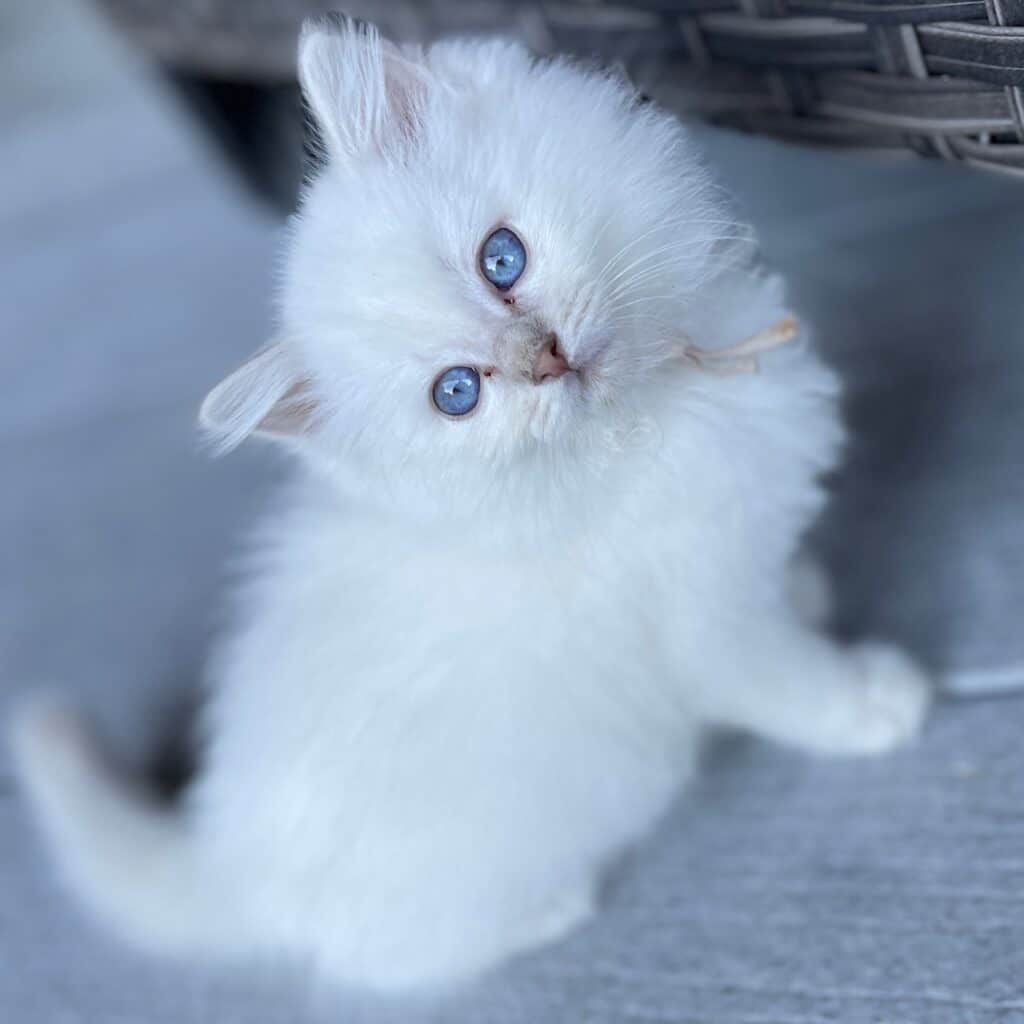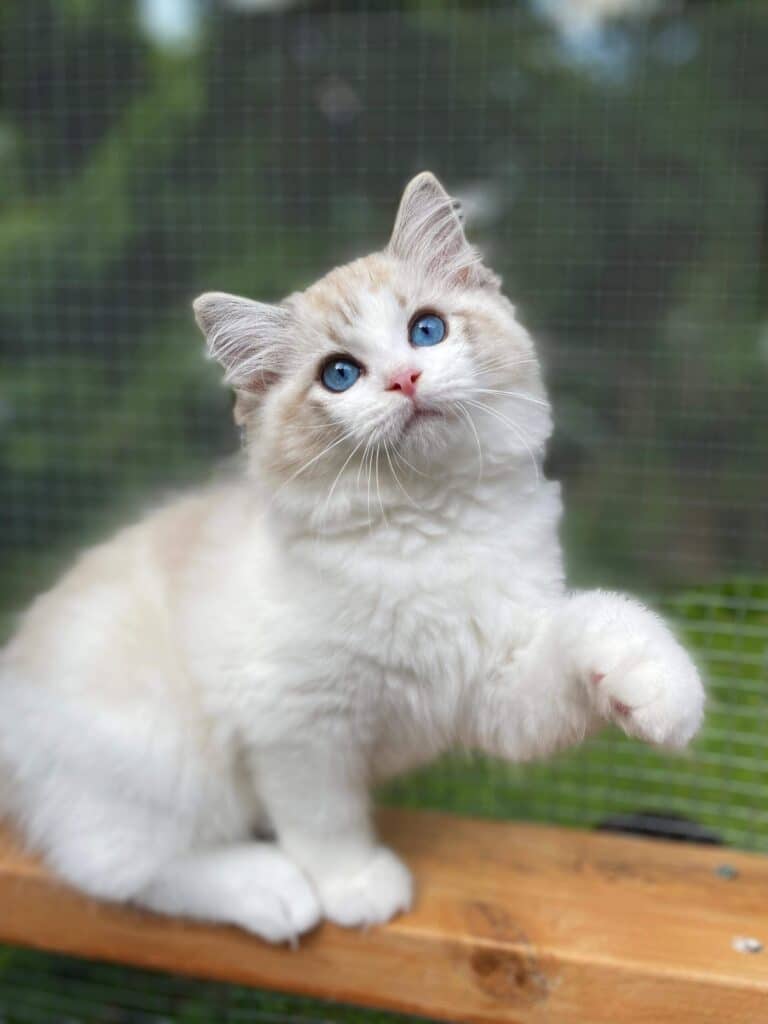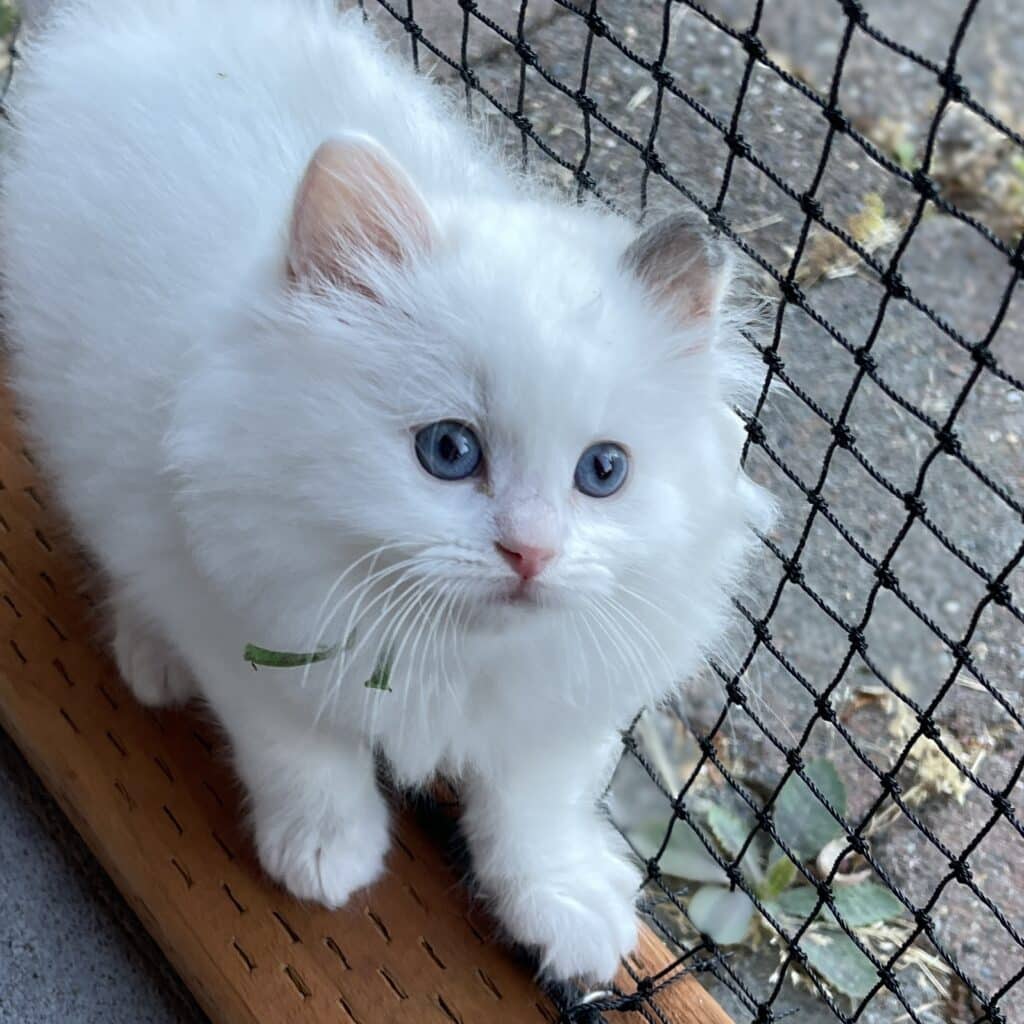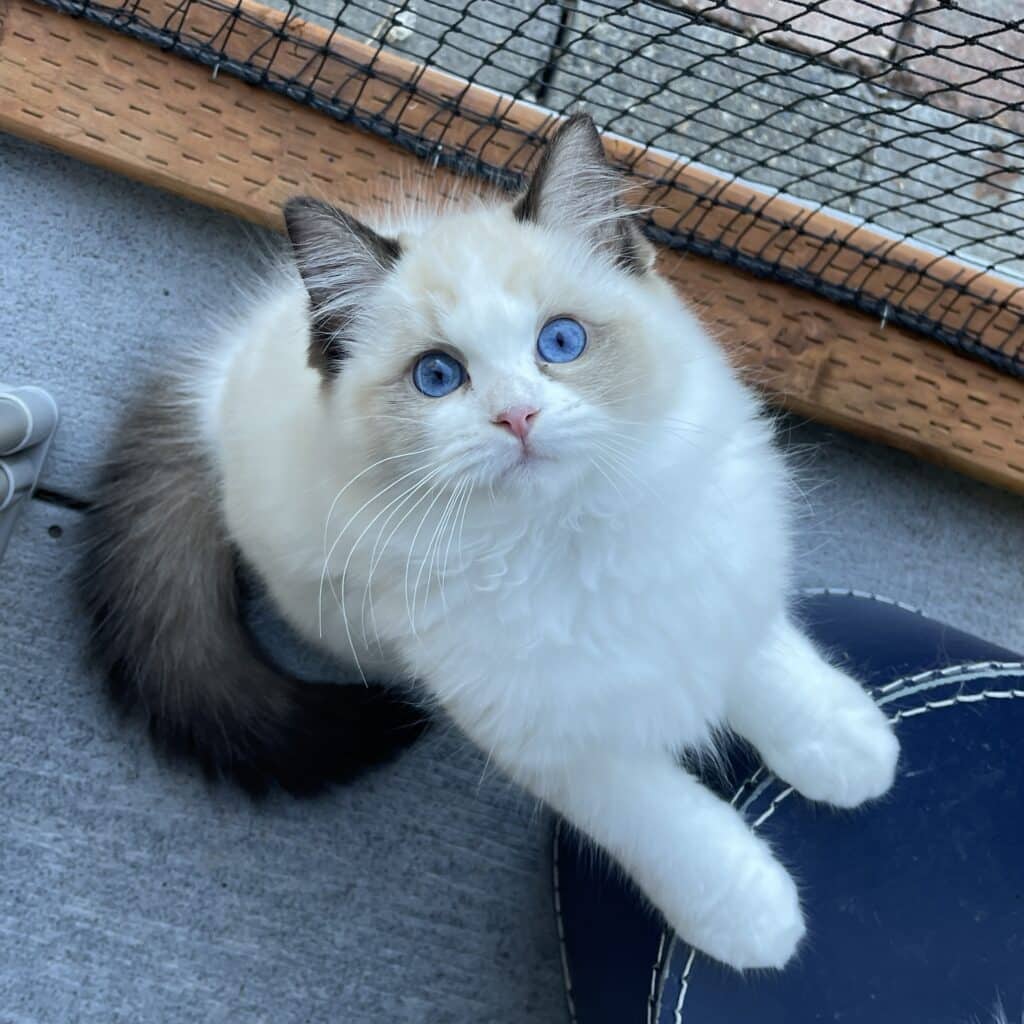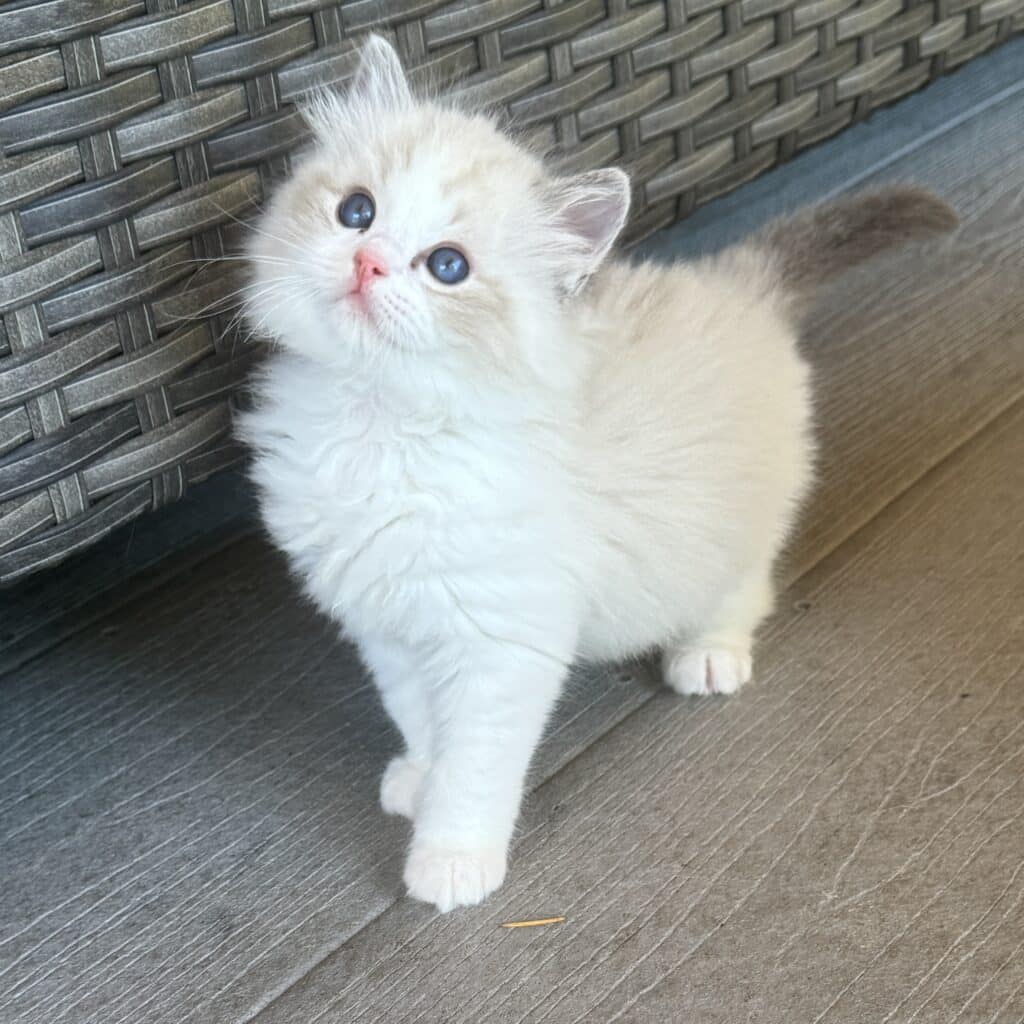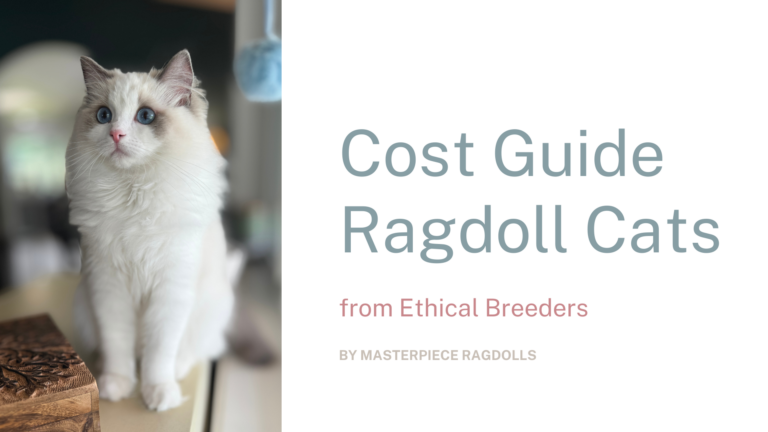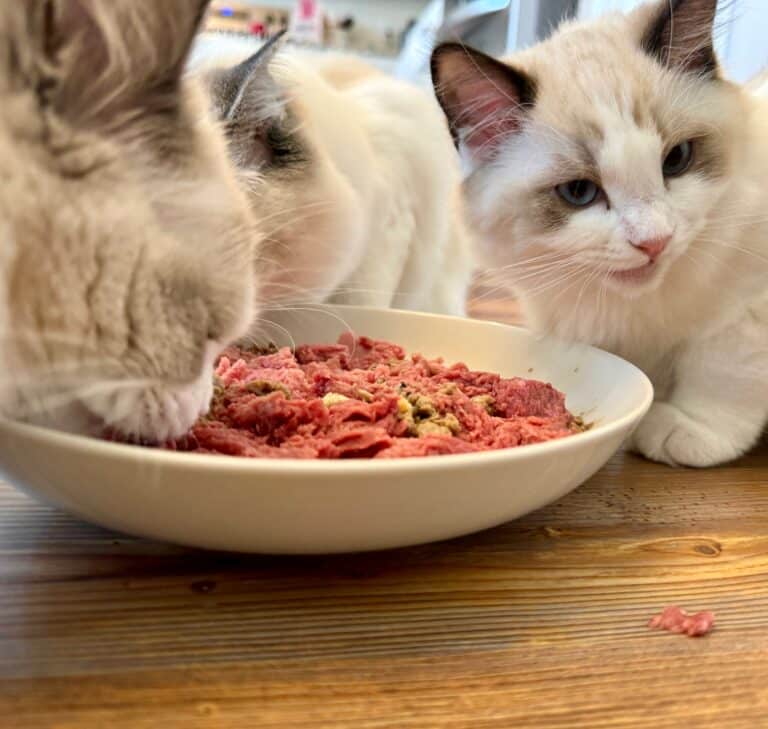Why are ragdoll cats expensive? Maybe you’re considering purchasing a ragdoll kitten as a pet, or maybe you’re interested in breeding ragdoll kittens. Here, I’ll give you the skinny on why these fat cats are not cheap.
Ragdolls are “so expensive” because they are a relatively new breed. Ragdoll cats are in demand. We all love the dog-like temperament and crazy-beautiful expressions. These qualities attract people from all walks of life. Loyal & laid back, these cats are living, breathing luxury just laying around the living room. The well-bred ragdoll elevates the home in a way nothing else can – not even the dog.
Sure, the up-front cost of a ragdoll cat can feel like a lot, but how can a business function without expenses? There are actual overhead, behind-the-scenes expenses we can share with you!
So, where does that money go?
Some say all that cash lines the designer pockets of wealthy breeders. Let me set the record straight. It is not. Go to a cat show. Many members of the cat fancy look somewhat impoverished. It’s a wonder many of them have a full tank of gas to travel to the exhibit hall!
Ok, so I exaggerate a little, but it’s true that the cat fancy is not as well-funded or well-established as the world of dog or horse shows. Cat Breeding for the purpose of exhibition hasn’t reached the level of affluence that draws significant media attention and sponsorship typical of Best In Show.
Indeed, some breeders are dirt poor from a lack of business acumen, and very few profit exorbitantly from feline husbandry. Most of us find ourselves in the middle, claiming reasonable compensation for our time spent caring for the beloved breed. If we are wise and a bit lucky, we earn what we surrendered in hours, days, weeks, and months of overseeing the lives of others.
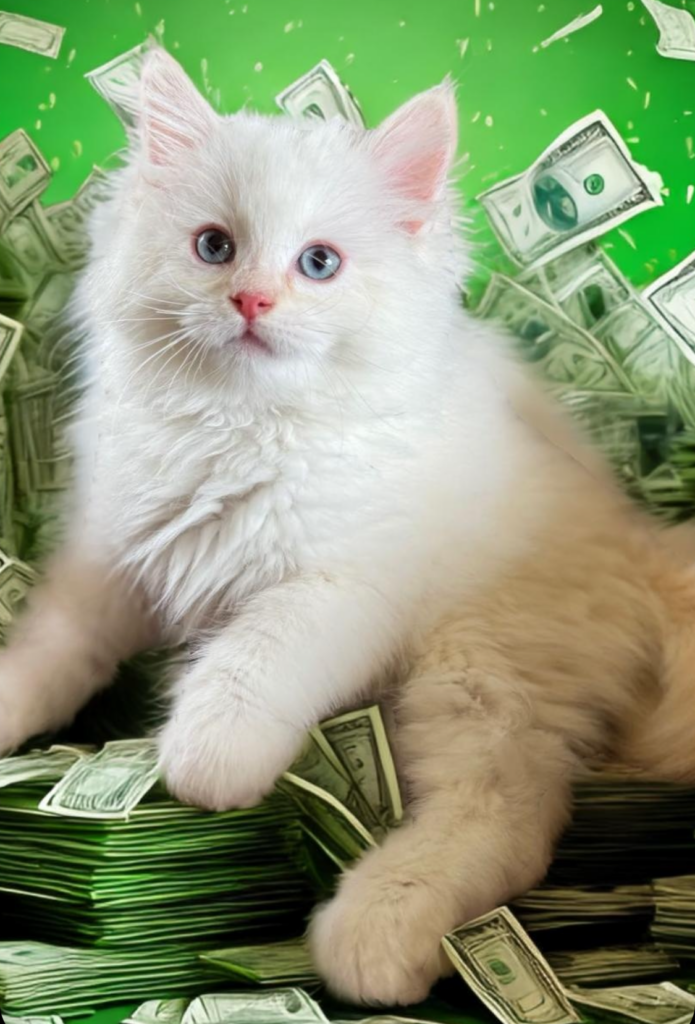
Top Five Reasons Why Ragdolls Are So Expensive
Breeding Rights Are Not Free, so ragdoll cats are expensive
If you want to breed, you’ll need registration rights indicating the cat is eligible for breeding. Otherwise, the litter produced won’t be considered purebred. This paper trail lends credibility to what a breeder is producing. Reputable breeders charge more for breeding rights. Those who care about breeding to standard typically sell higher-quality ragdoll kittens at a higher price to breeders. Why shouldn’t they? Established breeders have worked for years to create breeding-worthy stock.
The price of a pet-quality ragdoll kitten is significantly lower than a ragdoll purchased for breeding. Much of the breeding stock at Masterpiece Ragdolls comes at an initial cost of $5,000 and up. Testing, vetting, feeding, housing, and sometimes exhibiting the stud or queen increases the overall cost of the breeding kitten. It’s an investment the breeder makes in order to produce healthy, standard-based kittens.
In this breeder slip excerpt, the “Not for Breeding” and “Not for Showing” boxes are left unchecked. This means the owner of this kitten can register him and breed him according to the studbook tradition. In this case, TICA will permit registrations for litters if the mother is also registered to the standard studbook.
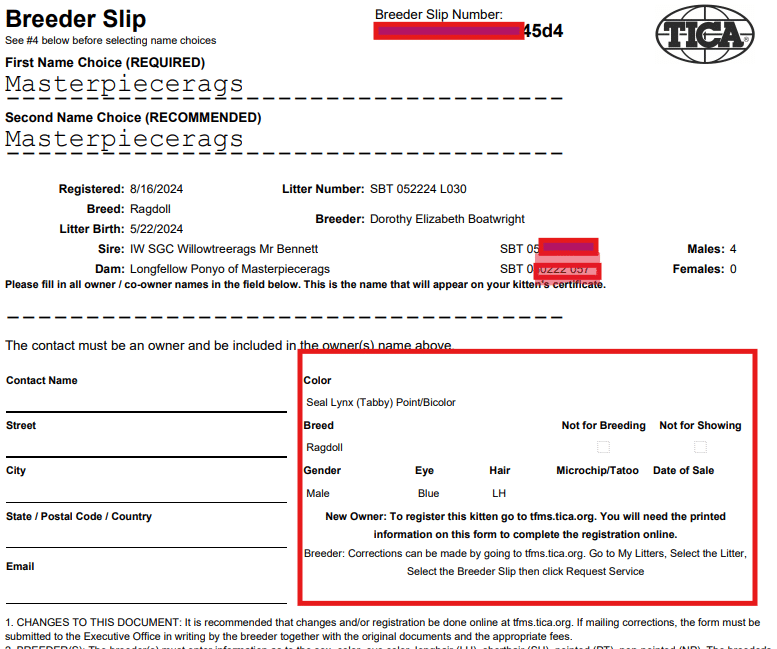
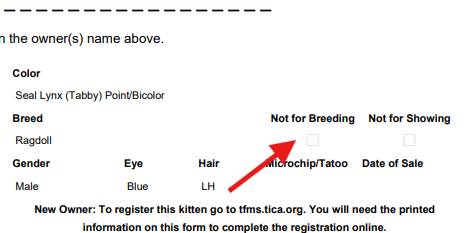
Sure, we could have acquired an un-papered breeder from a kitten mill and bred and rehomed pets on Craigslist, but that’s not how reputable breeders do it.
Anyone can purchase a ragdoll kitten from someone who fails to spay or neuter their kittens before rehoming. Many kitten mills sell these unaltered kittens because the surgery is risky, spendy, and time-consuming. So, if someone wants to breed kittens without rights, it’s possible. This unregistered breeding can produce cheap kittens without “papers.” The person seeking ragdoll kitten “without papers” gambles. Buyers mistakenly think that registration from TICA or CFA will cost more and that adopting the same quality & value is possible without papers.
Nothing could be further from the truth. TICA-member catteries register their litters for under $15.
Building, equipment, & supplies add up, so that’s why ragdoll cats are expensive
Besides health care and illness, cattery space is the most frequently discussed aspect of any cattery. Depending on the property values, ragdoll cats are more or less expensive. In the pacific northwest, square footage purchased costs about $350/SF.
We breeders are constantly shuffling cats and kittens around to provide the happiest of circumstances for them. Breeders have little guidance on what is required, but most believe cats need vertical and horizontal space. We know cat fights abound if adequate territory is not available.
According to the USDA Animal Welfare Regulations, cats over 8 pounds must have at least four square feet with a minimum of 24″ in height. Undoubtedly, the USDA is not committed to the idea that such a small space is an appropriate long-term solution for cat breeding. Enclosures, however different, are necessary. Methods of enclosure vary. Large cages or dog runs are not uncommon. Many breeders rely on spare bedrooms, but even then, there is a limit to how many cats can occupy a bedroom. Many breeders claim that four is the limit for a standard bedroom. Separation and routine are imperative for any multi-cat environment, and experts agree that separating living quarters from humans is best.
In addition to well-ventilated & climate-controlled square footage, equipment and supplies begin to explain why ragdoll cats are expensive.
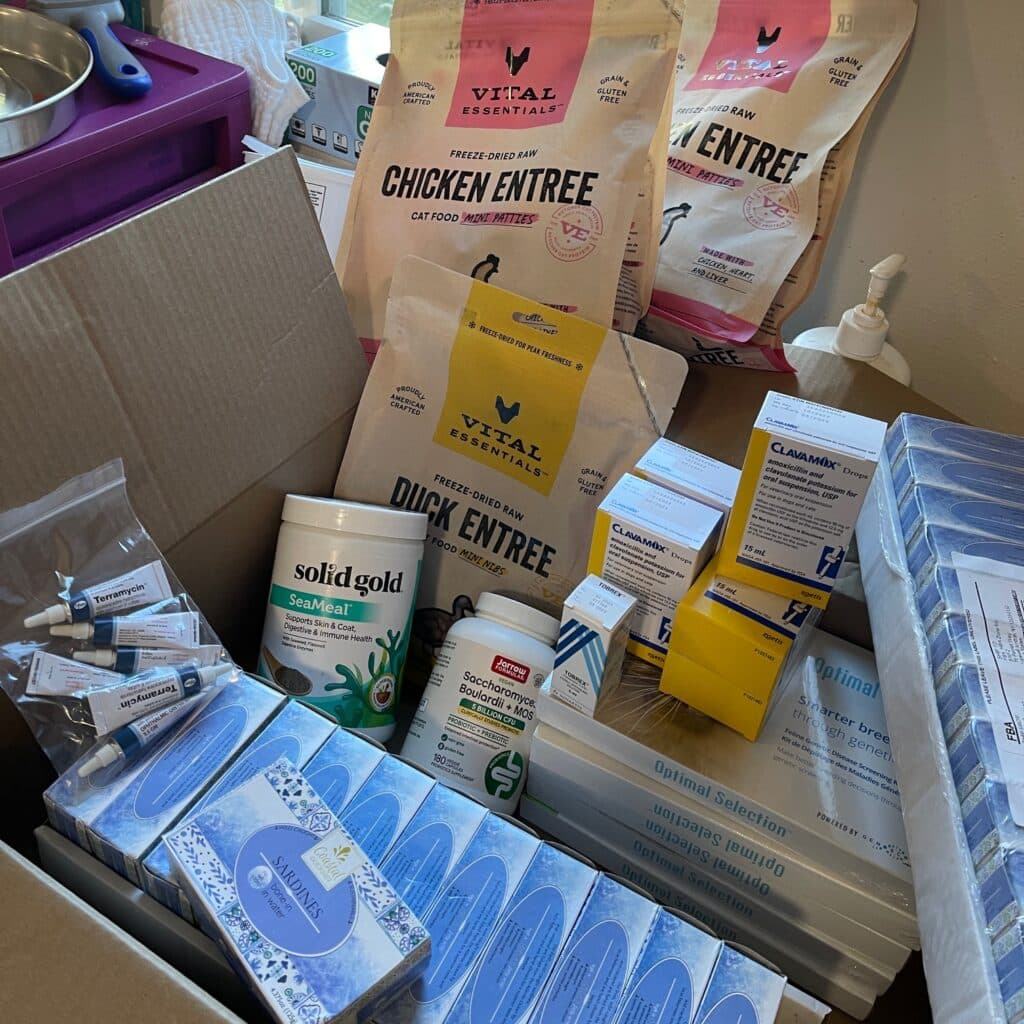
- Food – raw diet, here at Masterpiece, thus a meat grinder
- Litter & Litter Boxes (lots!)
- Kitten Milk Replacement Formula
- Feeding Tubes and nipples
- Needles & Syringes
- IV fluids
- Incubator
- Nebulizer
- Oxygenator
- Revolution or other Flea Prventative
- Dewormers (fenbendazol, pyrantel, drontel)
- Antibiotics (clavamox, doxycycline, clindamycin, azithromycin, terramycin, albon…)
- Vitamins & Supplements (calcium, probiotics, immune boosters, Vitamin B injection)
- Pill Crushers, fillable medine bottles
- Blow Dryers – boxes and portable
- Kennels for Birthing
- Containment systems to litter-box train
- Grooming tools: brushes, clippers, shampoos
- Water Fountains & Replacement Filters
- Cat Trees & Beds
- Toys & Wands
- Treats and Feeders
- Vaccines
- Cleaning solutions and supplies
- Showing Equipment & supplies (powders, sprays, etc)
- Carriers and blankets
Obviously this litter is not exhaustive, but you get the idea. Sometimes, just the act of finding a reliable source for this inventory is the result of combing the internet for hours & connecting with fellow breeders.
Loss Prevention Happens
Cats and kittens are prone to numerous upper respiratory illnesses. Dr. Lindley, at Kitty Klinic in Lacey, WA, once told me that the feline URI is unconquerable. She didn’t say untreatable. We vaccinate, we quarantine, we treat, we cross our fingers. That’s all we can do. We spend hours in textbooks, on forums, in veterinarian’s clinics and hospitals trying to root out a bacteria or suppress a virus. It can be exhausting and disheartening. Loss is simply a part of breeding: nature’s way of controlling the population. Despite the oxygenator and incubator, sometimes we just lose kittens. But before that fatal day, we lose sleep and money spent on medications, feeding tubes, heating pads, etc. We’ve been told to expect up to 20% casualty on average. We have been fortunate; our casualty rate is much lower.
Vet bills stack up, making ragdoll cats so expensive. Queens are at risk for various medical conditions and illnesses. They regularly visit the doctor for exams, and at least annually, a small to medium cattery expects an emergency of some kind: telescopic colon, mastitis, cat bite, blown ACL, C-Section, etc. It’s just like raising kiddos, it seems. Unforeseen health issues arise, so we breeders budget for them. Breeder Pet Insurance is not even an option.
Additionally, Veterinary costs are skyrocketing due to the shortage, and private equity firms are buying out small clinics that used to operate independently. Also in the news.
If a breeder does not generate enough revenue by selling pedigreed pets, she will likely cut corners on animal health care. Having procured many kittens, I can say from first-hand experience that you get what you pay for, generally. So yeah ragdoll cats are expensive because medical care is expensive.
Employee Compensation & Benefits
Most ragdoll breeders are sole proprietors. We run the show with the help of our family members, sometimes a contracted cleaning person. Think of the hours & days dedicated to these fabulous felines. Think of all the vacations and family reunions unattended. If the breeder does travel for more than a few days, she must hire a trustworthy person to supervise every aspect of the cattery. The cost of boarding just one cat is greater than $60/day. Imagine boarding 5-10.
Wages.
The average income for a humanities major college graduate (what I am) is around $68K per year for a typical 40-hour work week. After taxes, that looks more like $55K, or $4600 per month. Assuming the breeder has dedicated the five months to raise one litter of kittens (best-case scenario, five viable kittens), and she rehomes them for a price of $3000 per kitten, the revenue generated is $15,000 for five months of unavailability for other work. She has successfully collected $3000/month to pay for food, housing, medical, and associated administrative costs. She would need to raise double that amount to recoup her time as an employee elsewhere. That “elsewhere” would offer her paid time off, sick leave, and health care, and her hours would be more consistent – no middle-of-the-night labor crisis. (I’m talking myself out of breeding pedigreed ragdoll kittens, here!)
If we broke this down to hourly (40/week), we might see her earn somewhere around minimum wage, depending on the state. If you are considering breeding, don’t do it to line your designer jeans. Do it because you love ragdolls and people.
In this context, ragdolls are not so expensive after all.
Administrative Costs
TICA is like a speed trap: whatever they can charge, they charge. See those lovely pedigrees on our studs and queens? They are $50 each. Can I get a certified copy anywhere else? Nope. TICA is my favorite monopoly. TICA charges us membership dues, litter & kitten registrations, and cat transfers. We pay to show up on their breeder listing page. We pay in-a-hurry document-processing $10 if we hope to get our registrations in a timely manner. We pay case fees to have the documents corrected. We pay to transfer between registries (TICA calls these “cases”). We pay TICA because TICA can’t operate without a revenue source.
Exhibition Fees and Travel Costs can soar. In 2023, Masterpiece Ragdolls spent $$$$ exhibiting International Winner WillowtreeRags Mr. Bennett. Why? Cat Shows are held all over the world. They are a fundamental part of networking, building strong relationships, and learning more about the breed. They are part of earning one’s stripes in the community and building trust with cat-fancy aficionados. We certainly don’t plan to spend $$$$ every year, but some exhibition costs should be anticipated. In addition, we believe conformation is important in the primary stud of any cattery. A nearly-perfect stud will raise the quality of lesser perfect queens’ offspring.
Accounting, web design & management, and subscriptions to dozens of widgets, programs, and other techy services are essential in today’s market. Web presence is absolutely necessary. Otherwise, the kittens would just grow up and stay home with me. That would not be sustainable.
It’s just a cat after all: How expensive is a ragdoll?
It’s a well-behaved, people-pleasing cat with a health guarantee and breeder support.
Considering that Ragdoll cats are low-maintenance and long-living creatures, are ragdoll cats so expensive? Typically, it is $1,800-$4,000, depending on the breeder. If the average life span is 14 years, mathematically, that works out to $128 – $285 per year.

